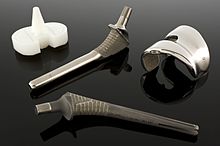

Scientists at the Northwestern University have successfully developed a novel biomaterial that could be used to regenerate high-quality cartilage of the knee joints. The study was conducted on a large-animal model. It has a rubbery appearance, and it is material of a complex network of molecules. These molecules together assembled create a natural environment of the human cartilage.
In this new study, researchers used this material to replace the damaged cartilage in the knee joints of animals. They got promising results within just six months. They observed evidences of the cartilage getting repaired. There was a growing new cartilage, which consisted of natural biopolymers, such as collagen II and proteoglycans. They facilitated mechanical resilience in joints, and the process took place without any pain.
However, researchers have to perform more work in this regard. They are of the view that the novel material has the potential to prevent complete knee replacement surgeries in the near future. The material could be effectively used to treat degenerative diseases, such as osteoarthritis. It can also be used to repair injuries of sportsmen. The study has been published in detail in the Proceedings of the National Academy of Sciences.
Samuel I. Stupp is the researcher who led this study at the Northwestern University. He said that cartilage is one of the most important components of the joints in human body. During the course of time, a cartilage can get damaged or may undergo a breakdown. This can severely impact the overall health and mobility of affected people.
In humans, adults do not have natural ability to heal the damage done to cartilage. With this new therapy, researchers could induce repair in the damaged tissue that does not regenerate naturally. The mode of treatment offered has the potential to solve a serious clinical problem.
In this study, the human cartilage was activated with the use of “dancing molecules.” They could boost the synthesis of proteins associated with the tissue matrix. In another related study, a hybrid biomaterial was used in place of “dancing molecules.” The new biomaterial has two components: the first component is a bioactive peptide that binds with TGFb-1 (transforming growth factor beta-1).
The growth factor is an essential protein that promotes the growth and maintenance of the cartilage. The peptide modifies hyaluronic acid, which is a natural polysaccharide that is present in the cartilage. It also binds with the lubricating synovial fluid of joints.
Many people are well-versed with hyaluronic acid as it is a common ingredient of many skincare products. According to Stupp, it is also found naturally in most tissues of the human body, and this includes the brain and the joints. The researchers chose hyaluronic acid as it was very similar to the natural polymers of the cartilage.
The team of researchers were supervised by Stupp as they integrated the chemically modified particles of hyaluronic acid and the bioactive peptide. Thus, they strived to self-organize the nanoscale fibers into bundles, which resembled the natural structure of the cartilage. The main objective of the researchers was to create an enthralling scaffold for the cells in the human body. This would induce them to regenerate the cartilage tissue.
.
